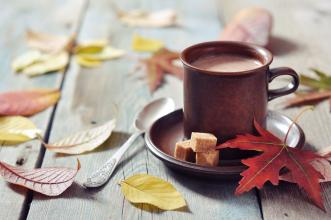Introduction to the taste of washed Santa Cruz Manor in Ecuador
Santa Cruz still grows coffee varieties introduced by French agronomists in 1875, so the coffee is more than 130 years old. And these old coffee trees have now become one of the special symbols of Santa Cruz coffee. The laws of the Galapagos Islands prohibit the use of chemicals and pesticides on the island, so the Santa Cruz estate produces organic coffee.
Name: Santa Cruz Manor
Origin: Santa Cruz, Galapagos Islands
Tree species: old Bourbon, 1875
Altitude: 375m, due to the special geographical location equivalent to 1150 m above sea level
Rainfall: 1750 mm
Raw bean treatment: washing treatment and sun drying
Others: planted under shade trees, flowered from April to May, harvested from December to February
I was startled by his appearance when I got the bean. The size and defect rate of raw beans are comparable to those of Sigri Manor in Papua New Guinea and Hilltop Farm in Australia. In 1869, Mr. Manuel Coppos, the first owner of the Galapagos Islands, hoped to find a crop suitable for growing on his farm. He invited a team of French agronomists to visit the area, and finally they planted Arabica coffee trees on the Galapagos Islands for the first time. However, after several trials and tribulations, coffee cultivation in the Galapagos Islands was completely abandoned in 1915. In a twinkling of an eye, in 1990, the Gonzalez family, the current owner of Santa Cruz, discovered the abandoned farm and reached an agreement with the owner at the time to begin rebuilding the coffee plantation.
Today, almost all the Galapagos Islands coffee on the market comes from the third largest island of the Galapagos Islands in San Crist ó bal Island. Santa Cruz Manor Coffee, as its name implies, comes from the second largest island, Santa Cruz (Santa Cruz Island). Santa Cruz Island is located in the center of the Galapagos Islands. It is said that this geographical location will form a unique microclimate, so some people think that Santa Cruz Island coffee is sweeter and more fragrant than other Galapagos Islands coffee.

Important Notice :
前街咖啡 FrontStreet Coffee has moved to new addredd:
FrontStreet Coffee Address: 315,Donghua East Road,GuangZhou
Tel:020 38364473
- Prev

Rich fruit flavor of Panamanian rosy summer coffee introduces the emerald manor
History of Esmeralda Farm: Haines, a Swede in 1924. Elliott founded Esmeralda Farm, which was not a coffee grower but a ranch. Forty years later, Daniel Lou in 1964. Mr. Bidarson's grandfather, Luther Ruffer. Mr. Bidarson bought Esmeralda Farm in order to have an old home after retirement, grandfather Luthor. Mr. Bidasson was born in Sweden.
- Next

Introduction of fragrant and pure Salvadoran coffee flavor manor production area
Salvadoran coffee ranks side by side with Mexico and Guatemala as the producers of Asa and Merdo, and is fighting for the top one or two places in China and the United States with other countries. The highlands of origin are large coffee beans of all sizes, which are fragrant and mild in taste. Like Guatemala and Costa Rica, coffee in El Salvador is graded according to altitude, and the higher the altitude, the better the coffee
Related
- Does Rose Summer choose Blue, Green or Red? Detailed explanation of Rose Summer Coffee plots and Classification in Panamanian Jade Manor
- What is the difference between the origin, producing area, processing plant, cooperative and manor of coffee beans?
- How fine does the espresso powder fit? how to grind the espresso?
- Sca coffee roasting degree color card coffee roasting degree 8 roasting color values what do you mean?
- The practice of lattes: how to make lattes at home
- Introduction to Indonesian Fine Coffee beans-- Java Coffee producing area of Indonesian Arabica Coffee
- How much will the flavor of light and medium roasted rose summer be expressed? What baking level is rose summer suitable for?
- Introduction to the characteristics of washing, sun-drying or wet-planing coffee commonly used in Mantenin, Indonesia
- Price characteristics of Arabica Coffee Bean Starbucks introduction to Manning Coffee Bean Taste producing area Variety Manor
- What is the authentic Yega flavor? What are the flavor characteristics of the really excellent Yejasuffi coffee beans?

